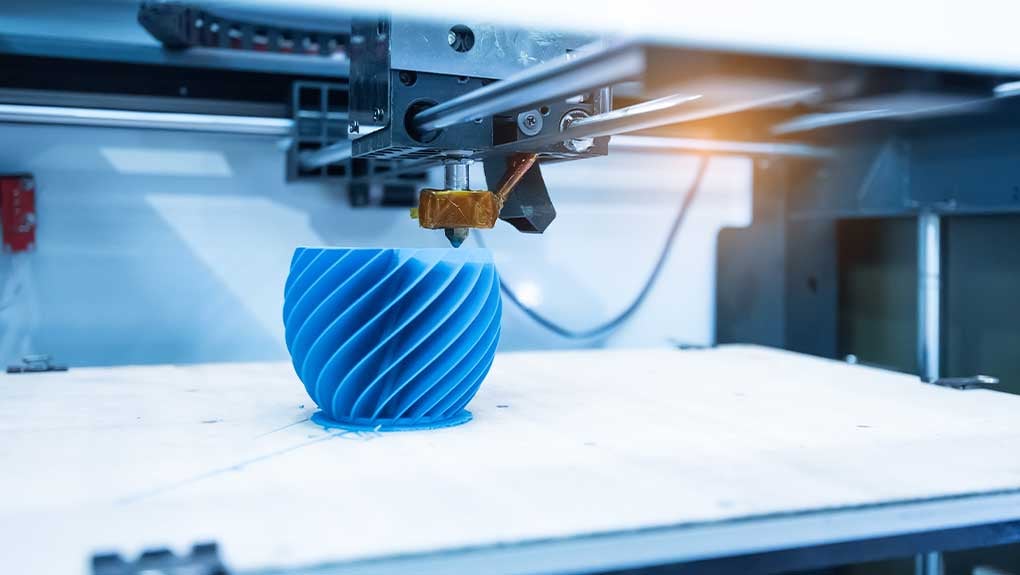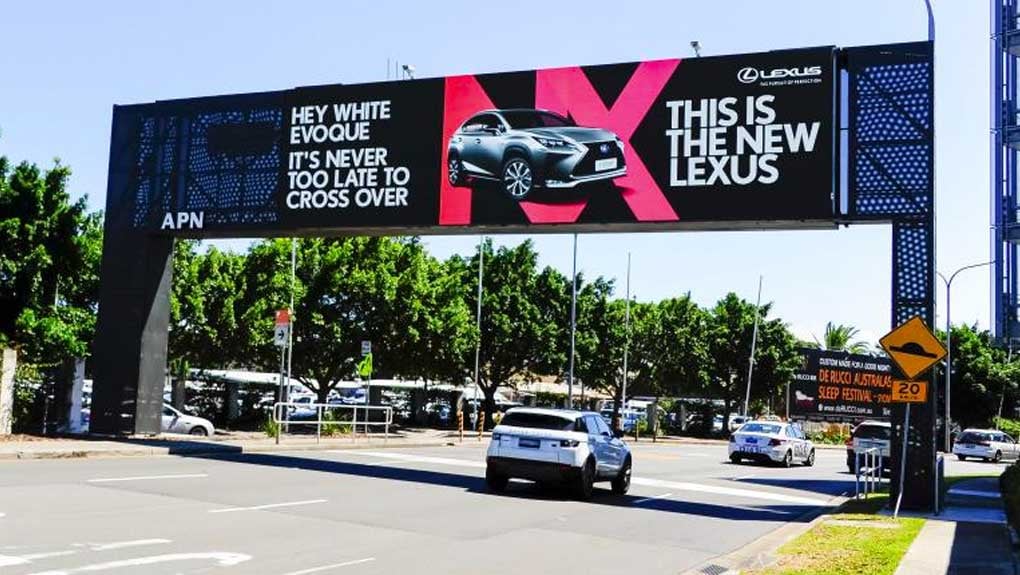Discover the 2024 marketing trends we've identified in our most recent blog post, 3 trends defining the future of marketing in 2024. Otherwise, keep reading our original article about the predictions we made back in 2020 as part of our Major Tomorrow project.
The marketing landscape continues to transform at an exponential rate. Five years ago, neither Facebook’s Live Streaming nor Google Home had been launched. As the rate of technological breakthroughs continues to accelerate it’s not important — but vital — that you keep an eye on how this will affect your marketing, and business as a whole, in the near future.
But what does the future of marketing look like? We don’t believe in crystal balls, but by looking at trends and following technological innovations, it is possible to make an educated guess as to what the marketing landscape could evolve into. Taking the time to think about the future will help you focus your marketing efforts, allowing you to be more prepared and agile for the inevitable changes time will bring.
So, given how far marketing has come over the last five years, where could it be in another five?
We handpicked a few of our more futuristic thinkers here at Major Tom to participate in a number of exercises. These were designed to challenge and inspire them to think through the influence of technological advances in various areas of marketing.
Here are three of our favorite ideas, which are 100% guaranteed to play out exactly as we’ve guessed.
Never mind free delivery, there will be no post and packaging when you buy those stylish boots off of Amazon. It’s 2024 after all. All you need to do is purchase the product style code, send it to your in-house 3D printer and voilà — you have your brand new pair of boots purchased and made from scratch within a few minutes.
Every day, 3D printing technology gets faster, more efficient and cheaper. When 3D printers were first invented in the 1980’s they were for industrial use. The SLA Printer in 1987 would set an organization back $300,000. That would be $677,000 today when taking into account inflation. However, thanks to the introduction of commercially available 3D printers, it’s now possible to purchase one for only a few hundred dollars. Give it a few more years and like the progression of computers and standard printers, it’s likely to be a staple in every home.

In 2024, a 3D printing strategy could be a standard in your campaigns. Imagine building a larger social following by offering followers promotional products they can personalize and 3D print instantly. Product testing and market research could be done on a larger and more efficient scale with selected customers being sent prototype designs to print out and test. It could also revolutionize customer service by allowing businesses to send free designs for broken parts instantly to the customer. Just remember to limit the number of prints and the time length of the product codes to keep your business healthy.
As for the 3D printer itself? How organizations will capitalize on the hardware will be interesting to watch. Love those Amazon Basics? Perhaps Amazon will produce a printer that will only print Amazon products. Maybe you need to download specific plugins from an online store to 3D print specific brand items. We will have to wait a little longer to predict that outcome.

Driverless cars are now fully accessible to the average Joe and the ordinary Jane since the summer of 2023. So, right now you’re sitting back, enjoying the ride to town in your driverless car like you do every day. But wait, what are you doing? How are you passing this extra free time?
You’re being entertained by the digital dashboard or seat screen that’s synced to each individual’s smartphone or smartwatch (or even smartglasses?). But here is where forward-thinking marketers have grabbed an opportunity. With billboards having been updated with smart technology, including geofencing capabilities, marketers are able to communicate their national campaigns with passersby on a more personalized and local level.
But what does this communication look like?

We envision that as the driverless car goes past the smart billboard, it receives a signal which identifies the target audience through the data available on the synced devices. Similar to how remarketing ads work today, they are then pixel tagged and later sent remarketing ads.
Thanks to the advances in data analysis and AI technology, all remarketing ads are generated using AI in 2024, ensuring their message is best suited to the individual. These ads can be videos, images or coupons.
However, the vital ingredient that these adverts need in order to delight, rather than annoy their ideal audience is entertainment. They need to be entertaining and possibly interactive, creating a similar experience to the Superbowl adverts. After all, the more marketers infiltrate people’s time, the more they need to invest in developing creative, entertaining content.
For the data analysts and data-hungry AI software, this new tactic will provide an abundance of data to feast on. The real-time data generated from smart billboards will give the location of (potential) customers while helping them gather more data on their behaviors and interests.
Although this may have today’s consumers concerned, the sophisticated data analysis and AI capabilities of the future should (hopefully) help reduce the level of unwanted ad noise they experience. Being able to better identify the likely customers for remarketing rather than anyone who just happened to land on your website like today, means that they are able to hyper-target. This will allow marketers to serve the right message, at the right time, to the right people — something that is still a challenge today.
Before we end up living on Mars, there will be another world we’ll experience living in — social VR.
Following the introduction of Instagram’s AR filters and Facebook’s 360 videos, social media platforms have continued to be early adopters of immersive technology. Now, in 2024, when passing time in the safety of your home, you can put on a sleek headset and immerse yourself in the social VR world.

Being able to place yourself in the center of your friend’s 3D photo or video is a new favourite experience. Missed out on tickets to a concert or conference? Live the experience with 360 live streaming. Within the social VR world, you will have access to all of the typical social features. You can play single or multi-player games, chat with (or mute) friends and groups, and browse your news feed. However, if a company like Singularity 6 build their in-game “virtual society” that is heavily focused on fostering online communities – then it may even revolutionize social VR before social VR has a chance to take off.
What does this mean for the future of marketing? VR is the new and highly effective marketing tool in the marketer’s toolbox.
Realtors will be able to show off their real estate to homebuyers without the viewers having to leave the comfort of their homes. The travel and hospitality industry will be able to give holiday goers a teasing experience of what’s in store at various travel destinations. Helping people decide whether Chile or Greece is the right option and whether they want to rent a villa or stay in a hotel. Movies, TV shows and video games will be able to put the users in the heart of the story, allowing them to watch or play a part of it for free.

As for customer service, companies will be able to create their own digital space. A space where users can speak to a human or AI-driven representative, or even chat with other customers, allowing businesses to help build and foster a community and gain valuable feedback.
By 2024, there is expected to be 1,479 million 5G smartphone connections worldwide. With 5G’s ability to run between 20 to 1,000 times faster than 4G, the quality and load time of immersive technology and large video files, along with things like Facebook’s first attempt at VR, makes this prediction not only plausible but likely.
What we know for certain about the future of marketing is it will be drastically different from what it is today. Therefore, it’s a competitive advantage to be curious about what the future may hold. Being curious helps organizations identify opportunities, uncover blind spots and maintain a positive attitude towards change.
So, what’s your educated guess about the marketing landscape in 2024? Will the average person be wearing trendy smart glasses at last? Instead, could smart contacts (“Content Lenses” — you heard it here first) exist? Will screen size no longer be a limitation thanks to screenless technology? No matter what you think, the important thing is that you are thinking about it.
Now, discover how to gain the clarity needed to navigate the future of marketing.
Did this post get you thinking about your digital strategy and how it will need to adapt? If you need help, get in touch.
What I have is a malevolent curiosity - I do tend to take a different perspective.
Receive exclusive action-focused content and the latest marketing insights.